Muay Thai is a combat sport that involves intense physical activity and contact. Due to the sport’s nature, injuries are common among practitioners. Some of these injuries can be minor. While others can be more severe, causing long-term damage or requiring medical attention. These are the most common injuries in Muay Thai and tips on preventing injury.
Bruises And Contusions
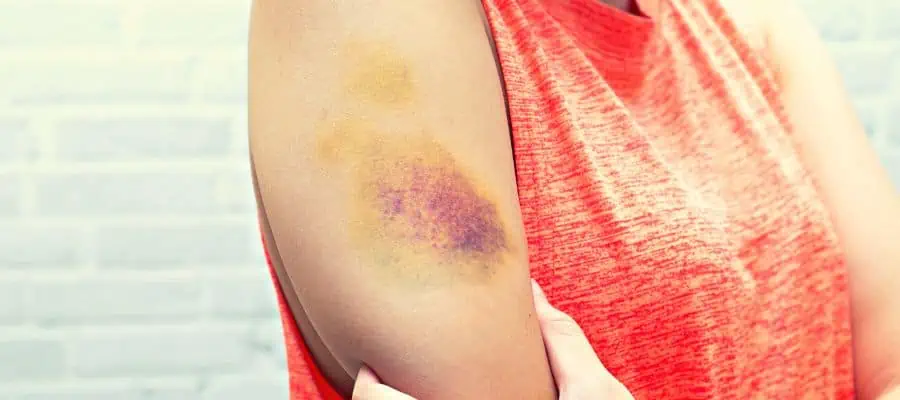
Muay Thai is a combat sport that uses fists, elbows, knees, and shins to strike opponents. Due to the nature of the sport, fighters are at a high risk of bruises and contusions.
Bruises are from blunt force trauma to the skin. The result is the rupture of small blood vessels under the skin. This leads to a discoloration of the skin, which can range from brown to dark purple. Bruises can occur from direct hits to the skin or from repeated impacts on a particular area.
Contusions are more severe than bruises. They occur when bleeding beneath the skin and into the muscle tissue. Contusions can cause significant pain, swelling, and bruising. In Muay Thai, contusions can occur from heavy strikes to the body or limbs.
To prevent these injuries, fighters should wear proper protective gear. They should warm up and cool down, focus on technique, and build their conditioning. Adequate rest and recovery if already injured. If a fighter experiences bruises or contusions, they should rest, ice, compress, and elevate the affected area.
They may need to take pain relief medication. Additionally, they should massage, stretch and avoid further injury. If in doubt, consult a healthcare professional if the injury is severe or doesn’t improve.
Sprains
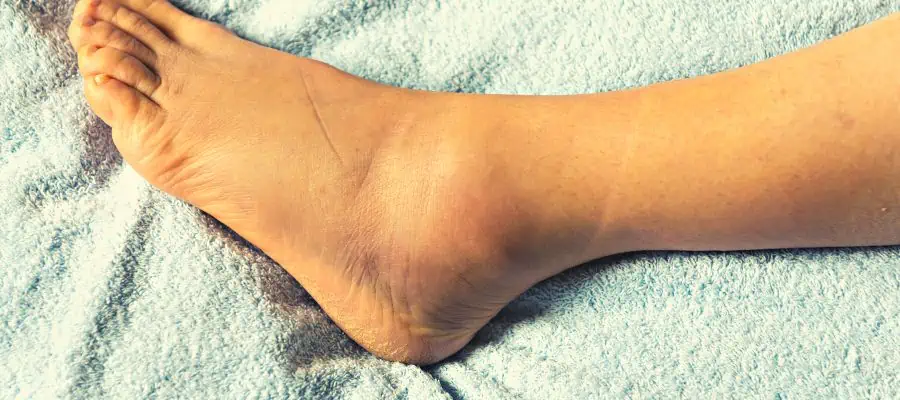
Muay Thai is a combat sport that requires immense physical exertion and conditioning to master. However, certain factors, such as sprains, can increase the risk of injuries. One of these factors is incorrect techniques when striking or blocking. This can lead to a damaged joint or ligament, resulting in a sprain. Common sprains can occur mainly on the hands and feet due to striking incorrectly.
Another factor that can lead to sprains in Muay Thai training is overexertion. This is because the sport involves repetitive motions of striking and defense movements. Spains can cause muscle fatigue, which affects performance. Muscle fatigue can increase the risk of further injury to an already existing sprain. This is why it is important to take adequate rest for such injuries.
Lack of conditioning increases the risk of sprains. Fighters who are not conditioned may be more prone to sprains. Their muscles and tendons may not be able to withstand the demands of the sport. This is why proper conditioning exercises and stretching are essential. This helps to reduce the risk of injury in Muay Thai.
Fractures

Muay Thai fighters are at a higher risk of sustaining several types of fractures due to the nature of the sport. Hand and wrist fractures are common due to the repeated impact of throwing punches. A boxer’s fracture, which is a break in the long bone connecting the fingers to the wrist, is a frequent type of hand fracture.
Kicking is another technique used in Muay Thai that can lead to foot and ankle fractures. The most common types of foot and ankle fractures include metatarsal and tibial fractures. Due to the combative nature of Muay Thai, fighters are at risk of getting hit in the face, which can result in facial fractures. The most common facial fractures in Muay Thai include nasal and orbital bone.
Rib fractures are also a potential risk. The impact of kicks or punches to the chest can cause rib fractures, which can be very painful and limit a fighter’s ability to move and breathe. Elbow fractures can occur in Muay Thai fighters due to the use of elbow strikes. These fractures can happen in the upper arm bone, the forearm, or the elbow joint itself.
To prevent fractures, fighters should wear protective gear. They should focus on proper technique and build up their conditioning gradually. Additionally, they should rest and recover and listen to their body. It’s important to seek medical attention if a fracture occurs.
They should allow enough time to fully heal before returning to training. While following these tips can help reduce the risk of fractures. It’s important to note that injuries can still occur, and proper precautions can help prevent serious injuries.
Cuts And Lacerations
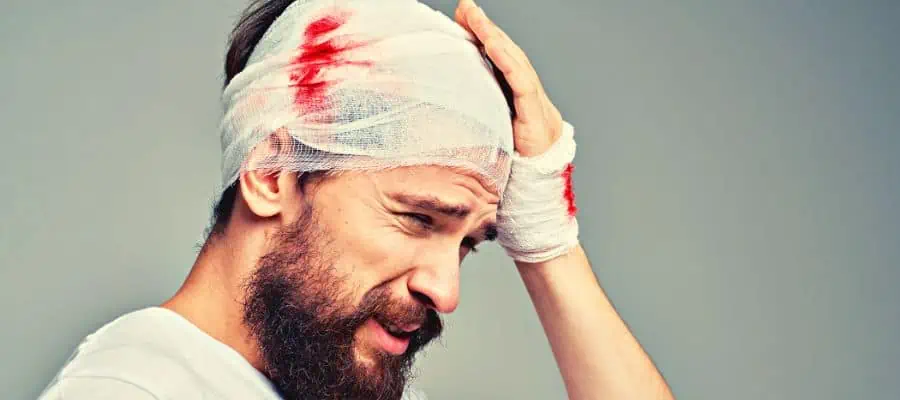
Muay Thai is a combat sport that involves a range of striking techniques, including punches, elbow strikes, kicks, and knee strikes. Although highly effective, the sport can lead to various injuries and risks, with cuts being the most common among fighters.
Facial cuts are one of the most frequent injuries caused by punches, kicks, and elbow strikes. The forehead, nose, and cheeks are the most vulnerable areas. These cuts can be severe and need immediate medical attention. Lip lacerations are also common in Muay Thai, especially if a fighter gets hit with a punch or elbow strike to the mouth. These injuries can be painful and may need stitches to heal.
Muay Thai fighters are also susceptible to cuts to their eyebrow area due to punches and elbow strikes. Which can bleed and affect vision. Kicking is a significant part of Muay Thai. Repeated trauma to the shins can lead to the thickening and hardening of the skin and bone. Leading to less susceptibility to cuts.
Hand and wrist cuts are also common in Muay Thai, particularly if a fighter’s punches land on an opponent’s teeth or head. The forearm area is also vulnerable to cuts from elbow strikes. To prevent injuries, fighters should wear protective gear. They should focus on proper defensive techniques and keep their skin hydrated.
While following these tips can help reduce the risk of cuts and lacerations. It’s crucial to seek immediate medical attention for deep or bleeding cuts.
Dislocations

Dislocations are a relatively common injury in Muay Thai, especially concerning the shoulder joint. A dislocation occurs when the bones that form a joint are forced out of their normal position, either partially or completely. This can be caused by a sudden impact, such as a punch or kick, or by unnaturally twisting or bending the joint.
When the shoulder joint is dislocated, the upper arm bone (the humerus) pops out of the shoulder blade (the scapula). This can cause severe pain and immobilization of the arm. Treatment for a dislocation typically involves the application of ice. The use of pain medications to manage discomfort.
Sometimes, the joint may need to be manually repositioned by a medical professional. This is a procedure known as a reduction. Once the joint is back in place, it may be immobilized for a period to allow the joint to heal properly.
To prevent dislocations, fighters should warm up and stretch. They should focus on proper technique. Develop and strengthen their joints. They should wear their protective gear and listen to their body. If already injured, they should rest and recover between training sessions.
With these tips, fighters can reduce their risk of dislocations. If a dislocation does occur, it’s important to seek medical attention. Once set back in place, allow time to fully heal before returning to training.
Concussions

Concussions most commonly occur as a result of head trauma from strikes. Fighters who suffer a concussion may experience a range of symptoms.
Typically confusion, difficulty thinking or concentrating, memory loss, headache, dizziness, nausea, or vomiting. Though some may experience sensitivity to light or noise and fatigue. These symptoms can last for days, weeks, or even months, depending on the severity of the injury.
Treatment for a concussion typically involves rest. Those injured should avoid physical activity until symptoms have subsided. Medication may sometimes be prescribed to manage pain or other symptoms. Severe cases of concussion may need hospitalization and close monitoring.
Shoulder Injuries

Shoulder injuries are common, as the sport involves a lot of upper-body movement. The shoulder joint is highly mobile. This makes it vulnerable to injury when subjected to repetitive or forceful movements. Some of the most common types of shoulder injuries are rotator cuff injuries, labral tears, and shoulder dislocations.
Rotator cuff injuries occur when the muscles and tendons surrounding the shoulder joint become damaged or torn. This can happen as a result of repetitive overhead movements. Movements such as punching and clinching or from a sudden impact on the shoulder.
Labral tears are another type of shoulder injury that can occur in Muay Thai. The labrum is a piece of cartilage that surrounds the shoulder joint socket. It helps to stabilize and support the joint. A labral tear can occur due to trauma, such as a direct blow to the shoulder, or from repetitive overhead motions. Symptoms of a labral tear may include pain, popping, or clicking in the shoulder.
To prevent such injuries, practitioners should undertake proper warm-up and stretching exercises. The use of proper technique, adequate rest, and recovery if injured. Practitioners should wear appropriate protective gear. They should also maintain good overall physical fitness and shoulder strength to reduce injury.
Knee Injuries

Due to the nature of the sport, knee injuries are common among practitioners. These injuries can range from minor bruises to severe ligament tears. Thus they can significantly impact a practitioner’s ability to train.
Patellofemoral Pain Syndrome is a common knee condition that occurs due to the kneecap rubbing against the femur bone. This condition can cause pain and inflammation in the patellofemoral joint. Leading to difficulty in the performance of movements required in Muay Thai.
Patellar Tendonitis is another common knee condition. It occurs due to repetitive jumping and kicking movements. This condition can cause pain and swelling around the knee joint. Making training rather difficult.
Meniscus Tears and ACL/MCL Tears are also prevalent due to the twisting and pivoting movements involved in the sport. These tears can be severe and lead to significant pain, swelling, and reduced mobility. Knee Contusions can also occur due to direct impact from strikes or kicks to the knee.
To prevent knee injuries in Muay Thai, practitioners should practice proper techniques. They should wear proper protective gear and perform regular strengthening and conditioning exercises. In case of an injury, adequate rest and recovery periods should be taken. Medical attention should be sought if necessary. Practitioners should avoid overtraining and listen to their bodies to prevent further injury.
Ankle Injuries

Ankle injuries are a common occurrence in Muay Thai. The sport involves a lot of rapid movements, jumping, pivoting, and twisting. This can put significant stress on the ankle joint.
Common ankle injuries include ankle sprains, strains, and fractures. An ankle sprain occurs when the ligaments in the ankle become stretched or torn. This is often due to sudden twisting or rolling of the ankle.
Ankle strains involve damage to the muscles and tendons in the ankle. This can occur from overuse or excessive stretching. An ankle fracture is a break in one or more of the bones in the ankle, which can result from a severe impact or trauma.
To prevent ankle injuries, proper warm-up and stretching exercises should be done. The use of protective gear and ankle support if injured. Practicioners should develop strong ankle muscles through regular exercise and conditioning. If injured, adequate rest and recovery periods are crucial.
Neck Injuries

The sport involves striking various body parts, which can lead to various neck injuries. Common neck injuries include cervical sprains, cervical disc injuries, pinched nerves, and fractures. These injuries can result from direct strikes to the neck. Though can occur from sudden movements or compressive forces in the clinch.
To prevent neck injuries, practitioners should practice proper technique and maintain good posture. They should wear appropriate protective gear such as headgear and mouthguards. They should also perform regular neck strengthening exercises. A good exercise is wrestler bridges to improve the strength and flexibility of the neck muscles.
Back Injuries
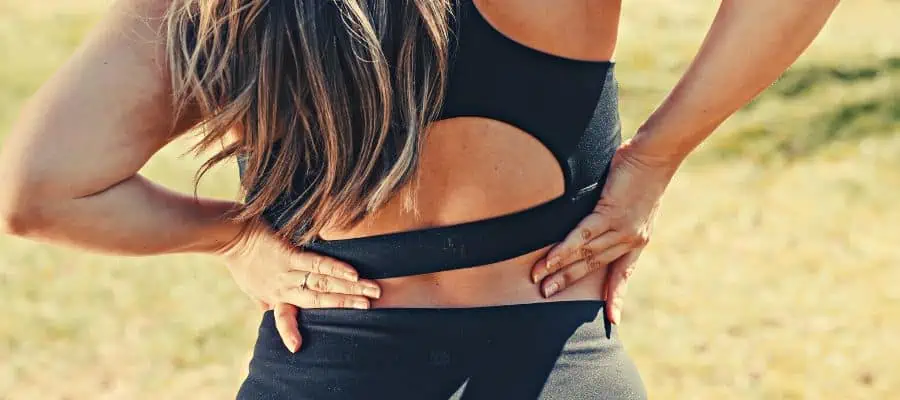
Muay Thai can be demanding and can lead to various back injuries. Two common injuries in this area are strains and sprains. These can occur due to sudden movements or repetitive impact. These injuries can cause damage to the muscles or ligaments in the back. Which leads to pain, swelling, and limited mobility.
Another common injury in combat sports, including Muay Thai, is a herniated disc. This injury occurs when the soft tissue inside a spinal disc bulges out. This puts pressure on the spinal cord or nerves. A herniated disc can cause severe pain, numbness, and even weakness in the back and legs.
Sciatica is another condition that can occur in combat sports. The result is from the compression or irritation of the sciatic nerve. The sciatic nerve runs from the lower back down to the legs. When it is compressed or irritated, it can cause pain, numbness, and even muscle weakness in the legs.
To prevent back injuries. Practitioners should practice proper technique and posture. Regular stretching and strengthening exercises reduce injury. They should use the appropriate protective gear and take adequate rest when injured. Practitioners should avoid overtraining beyond their physical limits, especially when injured.
Hand Injuries
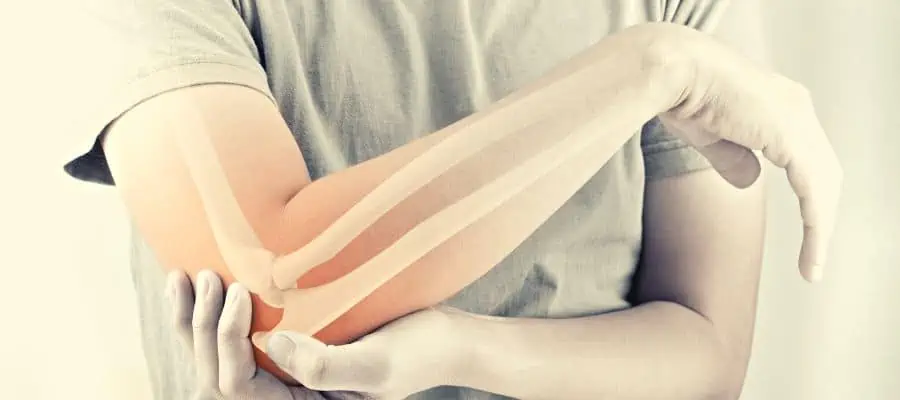
A boxer’s fracture is one of the most common hand injuries in Muay Thai. This is a break in the metacarpal bones of the hand. Punching incorrectly or hitting a hard surface can result in pain, swelling, and difficulty using the hand.
Sprained wrists are also common and can occur when blocking or punching incorrectly. This can lead to pain, swelling, and difficulty moving the wrist. Tendinitis is another common hand injury caused by repetitive punching and training. This condition can cause pain, swelling, and weakness in the affected area. Dislocated fingers and fractured fingers are also common.
Mainly caused by blocking or catching kicks or by awkwardly landing a punch. These injuries can cause pain, swelling, and difficulty moving the affected finger. Hand contusions, or bruises on the hand, can also occur in Muay Thai fighters, caused by being hit by an opponent’s punch or blocking a punch.
While not as severe as other hand injuries, hand contusions can still be painful and limit a fighter’s ability to use their hand. To prevent hand injuries, practitioners should wear appropriate hand wraps and gloves. They should also practice proper technique, avoiding striking with incorrect form.
Regular strengthening exercises, particularly wrist strengthening and forearm workouts. Practitioners should also take adequate rest and recovery periods to avoid further injury. When in doubt, seek medical attention to ensure proper treatment and prevent further damage.
Shin Injuries
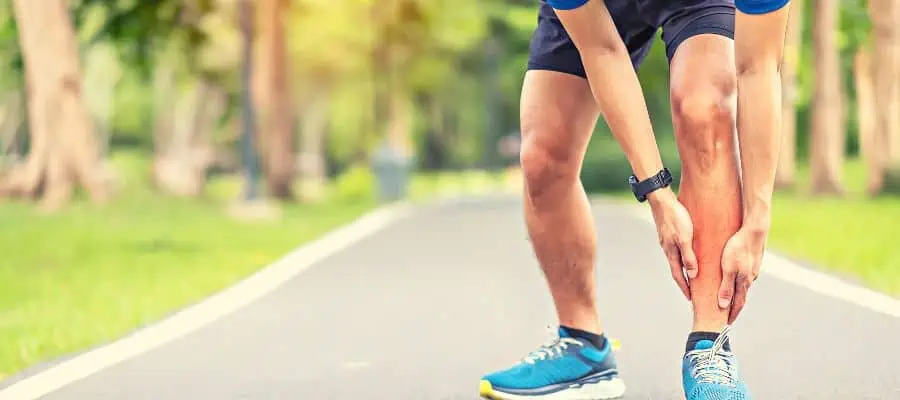
One of the most common injuries in Muay Thai is the shin. Muay Thai fighters use their shins to deliver powerful kicks to their opponents, which can cause damage to the bone, muscles, and tissue in the shin. The kick is checked when the shin bone is struck against a hard surface. This can lead to a condition called periostitis, the inflammation of the bone’s membrane.
To prevent shin injuries, Muay Thai practitioners should wear appropriate shin guards to protect the shin bones. They should also practice proper technique and avoid striking with incorrect form. Areas such as the elbows and if their opponent checks their kicks with their knees.
Regular strengthening and conditioning exercises like rolling the shins may harden them. Additionally, calf-related exercises can also help to prevent shin injuries. Adequate rest and recovery periods to reduce the risk of further injury. Seeking medical attention immediately after a shin injury when in doubt and
Rib Injuries
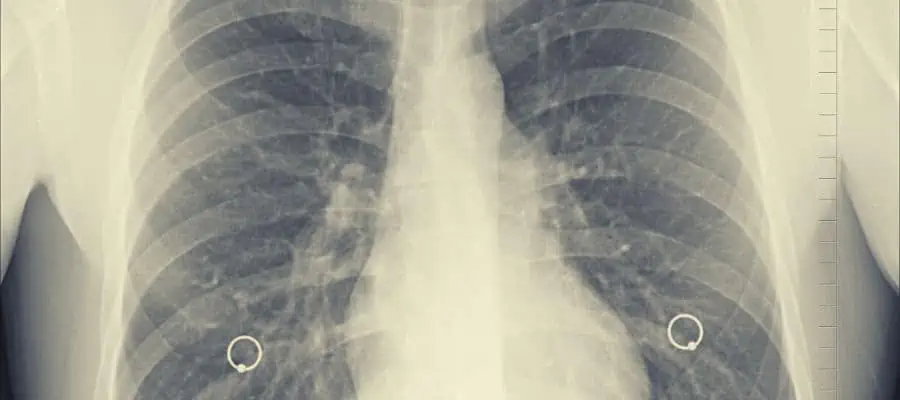
Rib injuries are common in combat sports like Muay Thai, where athletes are often subject to forceful strikes and kick to the ribcage. Three main types of rib injuries can occur rib: contusions, rib fractures, and rib dislocation.
A rib contusion is the most common type of rib injury in Muay Thai. It occurs when a direct impact from a strike or a knee to the ribcage causes a bruise on the ribcage. Symptoms of a rib contusion can include pain, tenderness, and swelling. Rest and ice are typically recommended for reducing these symptoms.
Rib fractures are a more severe type of rib injury that can occur when the force of impact is strong enough to break the rib. Rib fractures can be extremely painful and can take several weeks to heal. Treatment for rib fractures usually involves rest, ice, and pain medication.
Rib dislocation is a rare but serious injury that occurs when the rib separates from the cartilage that connects it to the breastbone. This injury can cause significant pain and difficulty breathing. An injury as such may need immediate medical attention to be set back in place.
Muscle Strains
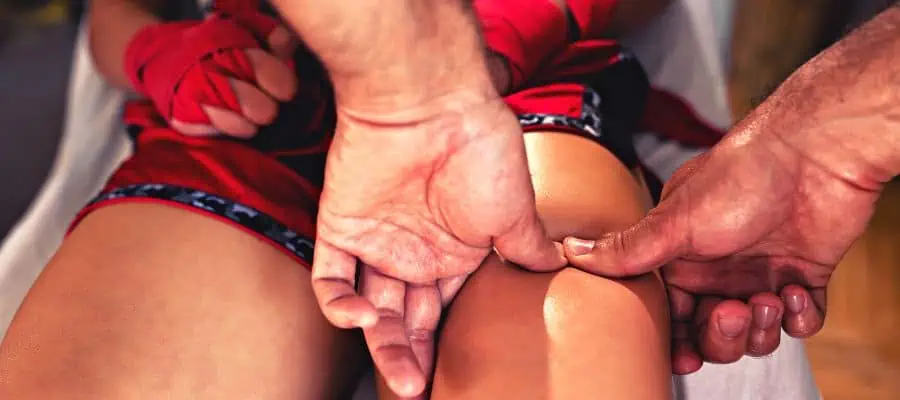
Muscle strains occur when the muscle is overstretched or torn due to excessive force. Strains can occur in various parts of the body, including the arms, legs, and torso. These injuries can range from mild to severe, depending on the extent of the damage to the muscle fibers.
One of the most common muscle strains in Muay Thai is the hamstring strain. The hamstring muscles are located at the back of the thigh and are responsible for extending the hip and flexing the knee. Hamstring strains typically occur when the athlete is kicking or performing a quick movement. The sudden change in direction creates strain resulting in an injury.
Another common muscle strain in Muay Thai is the quadriceps strain. The quadriceps muscles are located at the front of the thigh and are responsible for extending the knee. Quadriceps strains typically occur when the athlete is kicking or performing a jumping movement.
Muay Thai athletes may also experience muscle strains in their calves, shoulders, and back. These injuries can be caused by overuse, poor technique, or inadequate warm-up. The importance of stretching before training or competition must be recognized.
Conclusion
Injuries can occur for various reasons, such as improper training, overtraining, or lack of proper protective gear. Athletes need to take the necessary precautions to prevent injuries from occurring. Protective gear, body conditioning, proper technique, and warming up are essential. The RICE method is a basic first-aid treatment for acute injuries. RICE stands for Rest, Ice, Compression, and Elevation.
This is intended to relieve pain, reduce swelling and inflammation, and promote healing. When in doubt, seek medical attention immediately if an injury persists longer than intended. With this in mind, athletes can minimize the risk of injury and enjoy the many benefits of practicing Muay Thai.
Recent Posts
What is Manachai's Fighting Style? Unveiling Muay Thai Mastery
Manachai, a celebrated figure in the Muay Thai world, has captivated audiences with his exemplary martial prowess. Hailing from the heartlands of Thailand, his name is synonymous with the art of...
What Was Chamuekpet Hapalang's Fighting Style? Unveiling Techniques
Chamuekpet Hapalang was a renowned figure in the world of Muay Thai (record 200-48-2), embodying a fusion of Muay Bouk and Muay Khao styles. Originating from Thailand, the art of Muay Thai is known...
